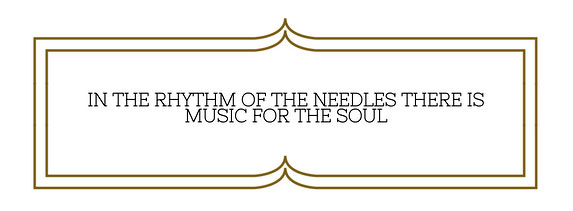The Bias Leaf Cowl - perfect for all knitting levels!
Since My Sister Knits is featuring North Light Fibers' yarn this month and since it is 15% off because we want you to try it and since I love it, I decided to put my other projects on hold and knit up a dear little Bias Leaf cowl to add to our display in the shop.This cowl, designed by highly regarded Norah Gaughan, is a wonderful way to use one skein of Water Street, their cashmere/merino blend. The pattern is free with purchase of a skein of North Light Fibers yarn! The pattern is well written and uses basic stitches to form the pretty design. You only need to know how to knit into the back of a stitch, purl two together, and slip a stitch from the left needle to the right. Easy peasy!There is a chart perfect for those who have never worked from one before with large squares and just a few easy-to-read symbols!“A good plan is like a road map: it shows the final destination and usually the best way to get there.” H. Stanely JuddThere are certain things I always do to set myself up for success when knitting from a chart. However, due to the simple chart and the ease of reading it, I thought my normal preparation unnecessary. Alas, I did not have my knitting road map!As I knit away, I realized that I needed each of my components of successful chart knitting and one by one I added them in. I would have avoided much frustration if I'd done this at the beginning!First, I use colored pencils to make the chart easy to decipher. I use one color for knit stitches, one for purl, and one for each of the symbols. Then I mark the symbols in the key with their corresponding color. This makes everything stand out and easier for my brain to process.
The pattern is well written and uses basic stitches to form the pretty design. You only need to know how to knit into the back of a stitch, purl two together, and slip a stitch from the left needle to the right. Easy peasy!There is a chart perfect for those who have never worked from one before with large squares and just a few easy-to-read symbols!“A good plan is like a road map: it shows the final destination and usually the best way to get there.” H. Stanely JuddThere are certain things I always do to set myself up for success when knitting from a chart. However, due to the simple chart and the ease of reading it, I thought my normal preparation unnecessary. Alas, I did not have my knitting road map!As I knit away, I realized that I needed each of my components of successful chart knitting and one by one I added them in. I would have avoided much frustration if I'd done this at the beginning!First, I use colored pencils to make the chart easy to decipher. I use one color for knit stitches, one for purl, and one for each of the symbols. Then I mark the symbols in the key with their corresponding color. This makes everything stand out and easier for my brain to process. Second, even if I don't think I need it, I mark where to start the rows of the chart. Often it's only a note on the side but on this chart I found that it relieved stress if I put an arrow on each row marking the direction of reading the row.Third, I use a piece of highlighter tape to mark where I am on the chart. I put it above the row I'm working on. It took some getting used to but it allows me to see what stitches were worked on the previous row. Often this lets me know if I'm on track with the pattern.Fourth, I always also mark the row as it's finished because that tape just might fall off!Essentially, I do everything I can to map out my journey with the chart. Some charts require a bit more even if they're pretty basic like this one. For instance, I needed to have the empty white squares colored in because I kept knitting them even with the bold red lines marking the pattern repeat. As you can imagine, that wreaked havoc with the pattern!
Second, even if I don't think I need it, I mark where to start the rows of the chart. Often it's only a note on the side but on this chart I found that it relieved stress if I put an arrow on each row marking the direction of reading the row.Third, I use a piece of highlighter tape to mark where I am on the chart. I put it above the row I'm working on. It took some getting used to but it allows me to see what stitches were worked on the previous row. Often this lets me know if I'm on track with the pattern.Fourth, I always also mark the row as it's finished because that tape just might fall off!Essentially, I do everything I can to map out my journey with the chart. Some charts require a bit more even if they're pretty basic like this one. For instance, I needed to have the empty white squares colored in because I kept knitting them even with the bold red lines marking the pattern repeat. As you can imagine, that wreaked havoc with the pattern! Usually I use stitch markers to identify the end of one pattern repeat and the beginning of another but because of the sloped edge, that technique doesn't work with this pattern. Fortunately there are so few stitches that the markers aren't needed.Each Right Side and Wrong Side row began with a specific set of a few stitches, so I wrote them down at the bottom of the chart to remind me what to do.I kept forgetting to knit into the back loop of one particular stitch so I used yet another color to outline that stitch on the chart. That drew my attention to the fact that something special was happening there.That is the cautionary tale of my Bias Leaf Cowl! Just because a pattern is simple doesn't mean that I can forgo my usual preparation that sets me up for success!
Usually I use stitch markers to identify the end of one pattern repeat and the beginning of another but because of the sloped edge, that technique doesn't work with this pattern. Fortunately there are so few stitches that the markers aren't needed.Each Right Side and Wrong Side row began with a specific set of a few stitches, so I wrote them down at the bottom of the chart to remind me what to do.I kept forgetting to knit into the back loop of one particular stitch so I used yet another color to outline that stitch on the chart. That drew my attention to the fact that something special was happening there.That is the cautionary tale of my Bias Leaf Cowl! Just because a pattern is simple doesn't mean that I can forgo my usual preparation that sets me up for success! One last item, this cowl is worked flat and I will use Very Pink's tutorial for how to seam a cast on edge and a bind off edge together. It's the clearest one I found.Come into the shop and try on this bundle of softness; you won't want to take it off!
One last item, this cowl is worked flat and I will use Very Pink's tutorial for how to seam a cast on edge and a bind off edge together. It's the clearest one I found.Come into the shop and try on this bundle of softness; you won't want to take it off!
